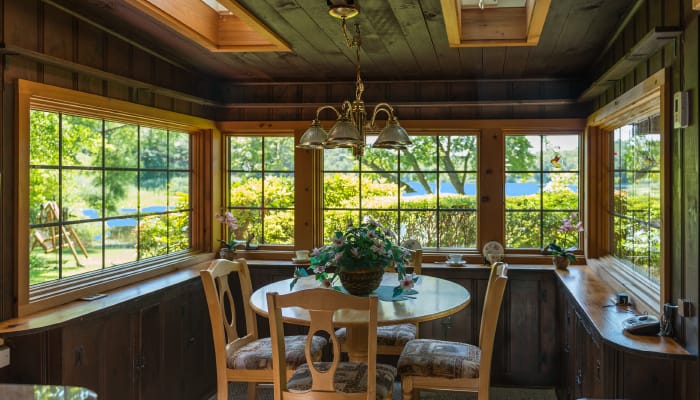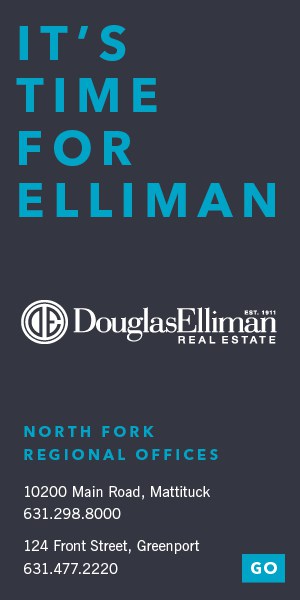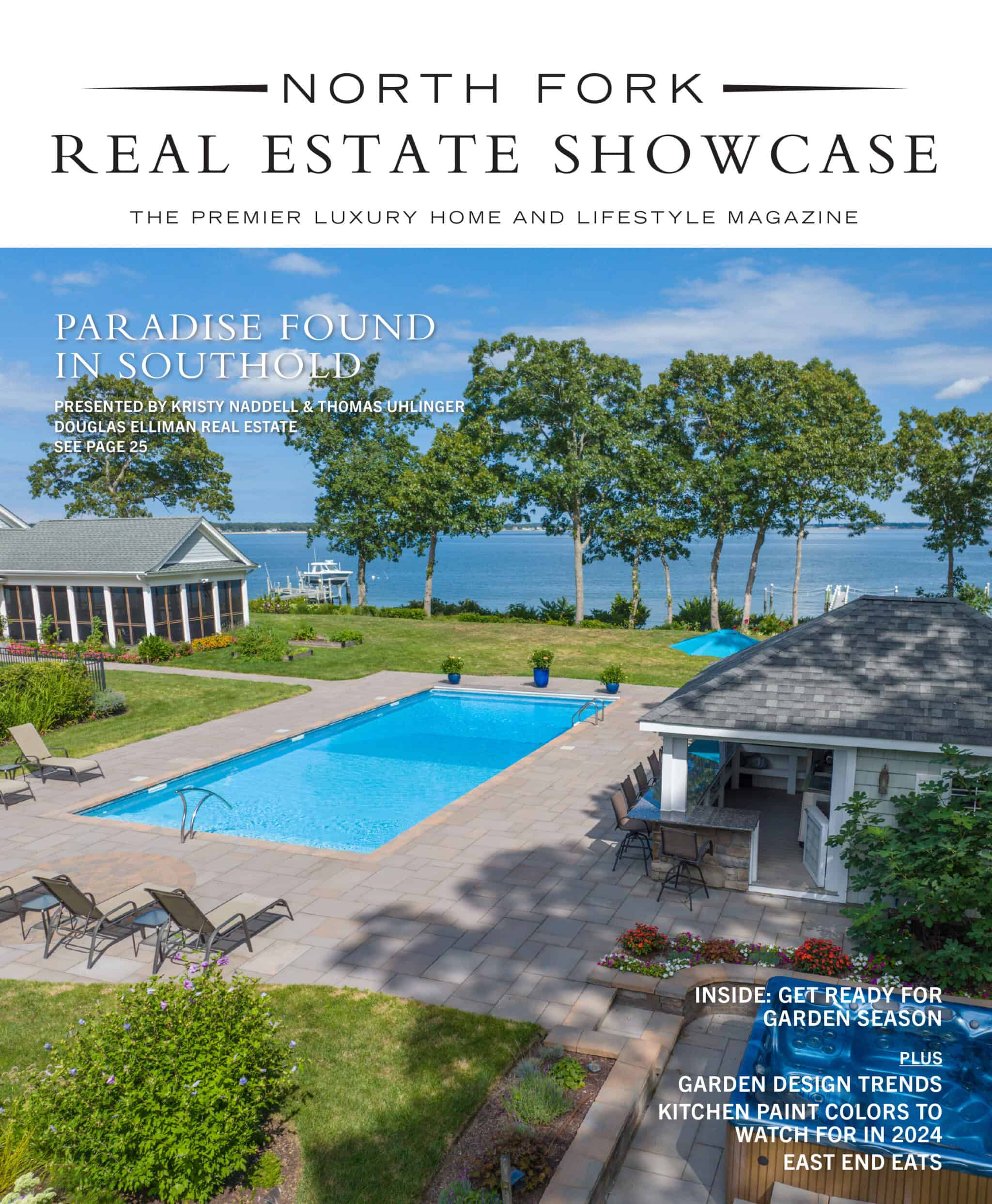The centuries-old practice of farming has seen a decline across the country within the last few decades. There are 2.1 million farms now found across America’s rural landscape, and just 2% of the U.S. population consists of farming families. On the North Fork, the evolution of agriculture has gone from a means of survival for families and feeding a population to include a new industry known locally as agritainment. Pumpkin picking and wine tasting are the first that come to mind, but there’s also an opportunity for an important educational aspect. This new wave of interest is lending itself to tourism while still honoring the area’s history.

“The North Fork has a legacy in agriculture, and it is rewarding to see how the region has adapted over the decades,” says Jerry Cibulski, a licensed associate broker with Century 21 Albertson Realty in Southold. “Mr. Sidor is producing North Fork Potato Chips from his farm in Mattituck. The wineries have brought a new focus and visitors to the area, and that has developed the farm to table offerings with organic farming options. There are chickens, eggs, pork, beef, blueberries and vegetable farms that have raised the bar in terms of food quality. Know your farmer!”
Understated but equally important is the expansion of beer, wine, and cocktail culture on the North Fork. Just within the last decade, micro and craft breweries have been opening, the first being Greenport Brewing Co. in 2009. There are just over a half-dozen breweries and cider houses now, including the newly opened Jamesport Brewery. Bars focusing on unique and craft cocktails have been increasing in popularity, and Long Island has become an award-winning wine region. For Mr. Cibulski, there’s a home that is representative of this culture with a history appealing to what it is that draws people to life on the North Fork.

At the 1939 – 1940 World’s Fair in Queens, Beverwyck Brewing Company created an English-style hunting lodge that was authentic in every detail to be used as a beer and food pavilion. Founded in 1878, the Albany-based brewery was one of few that survived Prohibition thanks to a license to produce non-alcoholic beer during that 13-year period. They reopened with six products including brews like Beverwyck India Ale, Bock, and Irish Cream Ale. At the fair, guests could get a meal for under $1 and a beer at the going rate, according to a 1940 Kingston Daily Freeman newspaper article Mr. Cibulski found when researching the home. He also found that the lesser known Beverwyck was purchased by the popular F&M Schaefer Brewing Company in 1950, though it later closed in 1972.
Also debuting at that same World’s Fair was The Zombie cocktail with a mix of rums, liqueurs, and fruit juices. It was invented in 1934, just after the end of Prohibition by Donn Beach, the founding father of tiki bars and owner of Don the Beachcomber restaurant in Hollywood. Mr. Cibulski shares the same newspaper article explaining that the cocktail was brought to the East Coast by Monte Proser for the fair. Though it had been a couple of years since Prohibition ended, the World’s Fair had brought something new yet authentic to the American lifestyle.

Prohibition is glamorized in the modern day as a time of beauty and thrill; the roaring 20’s being a favorited theme for celebrations. In Greenport alone, you’ll find an underground bar with a speakeasy vibe, called Brix and Rye, stirring and shaking cocktails from all periods. First and South hosts its annual Prohibition Party in December, inviting flappers, gangsters, and the like to celebrate the end of an era. Greenport Brewery itself is housed in an old firehouse next to the small brick Greenport jail that is now used as a museum. It’s the intrigue of a time very few today knew, but idealize, that make it an attraction.
This Beverwyck Brewing Company hunting lodge now overlooks Laurel Lake as a two bedroom, two bathroom home. It has a log cabin look made of Oregon timber and a deep red trim, with a 70-foot dock leading to a lake with freshwater lilies. Still, there’s an evident North Fork vibe. “The North Fork spoke to those who were looking for rest and relaxation with a focus on family experiences, fishing, sailing, food, and nature back in the 1940’s, and those desires are still attractive to today’s home buyers who are exploring these homes as they arrive on the market,” says Mr. Cibulski, the home’s listing agent. “It is nice to see as the world seems to change, some values seem to remain the same.”

Well maintained, there were some add-ons to the original structure once it moved to Laurel, including a kitchen, bathroom, and a master bedroom, which has a wall of windows facing the water in a mountain-like setting. Outside, there is a tiki lounge that ties into the significance of the introduction of the Zombie Cocktail at the same World’s Fair in which this lodge was used. The home is listed for $769,999.
What draws Mr. Cibulski to his work on the East End is how the North Fork has grown without losing its history, and how it has adapted to have relevant businesses to support the economy today. “The housing, the food, and the region all interconnect off of that,” he shares, noting how businesses are taking what was, reinventing it and bringing it back in the modern day.

There’s a familiarity of the Laurel Lake home’s history. Beer and cocktails were served here less than a decade after Prohibition ended, while today the North Fork prides itself on their breweries, wineries, cocktail bars, and soon, their distilleries. Farming was an important source of employment then, just as it is today. Past and present are intertwined here, and fundamentally significant. As Mr. Cibulski says, “modern farming meets modern families.”








